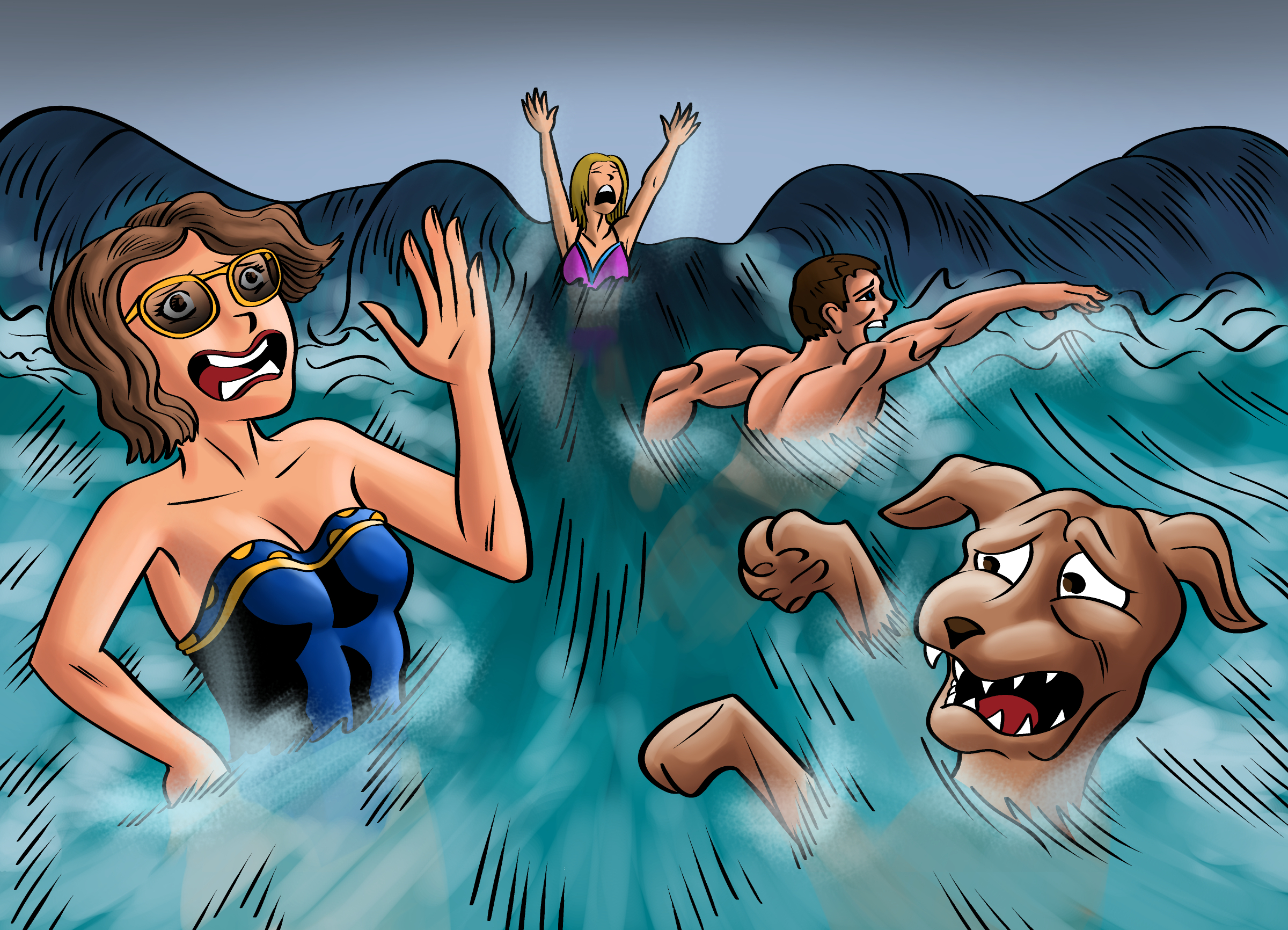Campus Queries: What are rip currents and how can students stay safe against them?

(Cody Wilson/Daily Bruin contributor)

By Maanas Hemanth Oruganti
July 29, 2019 1:06 a.m.
Campus Queries is a series in which Daily Bruin readers and staff present science-related questions for UCLA professors and experts to answer.
Q: What are rip currents and why are they important?
A: Beachgoers often overlook the hidden danger that is a rip current during their visits to the ocean, potentially resulting in an unpleasant surprise for swimmers.
Rip currents are a result of waves breaking under the influence of gravity, causing water – and swimmers – to move away from the shoreline.
When unsuspecting swimmers at the beach are caught in a rip current, they are carried away from the shoreline regardless of how hard they might try to swim directly against the current, said National Weather Service forecaster Ryan Kittell.
Rip currents can form anywhere along Southern California beaches and are a prevalent danger for swimmers, Kittell added.
The waves causing rip currents are formed by local and distant wind currents moving over the ocean’s surface, said James McWilliams, an atmospheric and oceanic sciences professor.
The waves approach shallow waters, become steeper and begin to tumble into the water as gravity breaks apart the shape of the wave, he added.
Once the waves fold in on themselves, some of the waves’ momentum transfers into shallow currents that move back into deeper waters. These shallow yet strong currents are known as rip currents.
McWilliams said rip current strength depends on when local or remote winds are strong, which means that rip currents are strongest during the winter when winds have the greatest effect on the ocean. However, Kittell said the period of greatest concern about the dangers of rip currents are summer and fall, because beach attendance is highest during that time frame.
“When there’s a lot of people in the water, it doesn’t take much of a rip current to cause a big issue,” Kittell said.
Kittell added winter storms in the southern hemisphere could also increase the strength and number of rip currents in the ocean near Southern California beaches during the summer, providing another cause for concern.
The best way to spot rip currents is to observe any discolorations in the water or swirling seaweed or debris moving away from the shore, said junior lifeguard instructor and third-year global studies student Ellie Graessle.
“One of the biggest signs that you’re caught in a rip current is that it pulls you (away from shore) but it doesn’t necessarily pull you underneath the water,” Graessle said.
The danger of rip currents lies in the fact that swimmers attempt to fight the current directly, which exhausts them quickly, Graessle said.
Any swimmer caught in a rip current should swim parallel to the shore, not directly against the rip current, until they can’t feel the pull of the current, Graessle said. Once the swimmer escapes the current, they should then begin swimming back to the shore as lifeguards head over to rescue them.
Beachgoers should take advantage of the numerous lifeguards present at beaches and ask them about swimming conditions and their assessment of the locations of currents, Kittell said.
“There’s such a large number of lifeguard stations and lifeguards in the (LA) county beaches,” Kittell said. “So strike up a conversation with them and get a good assessment of what’s going on in the waters.”


